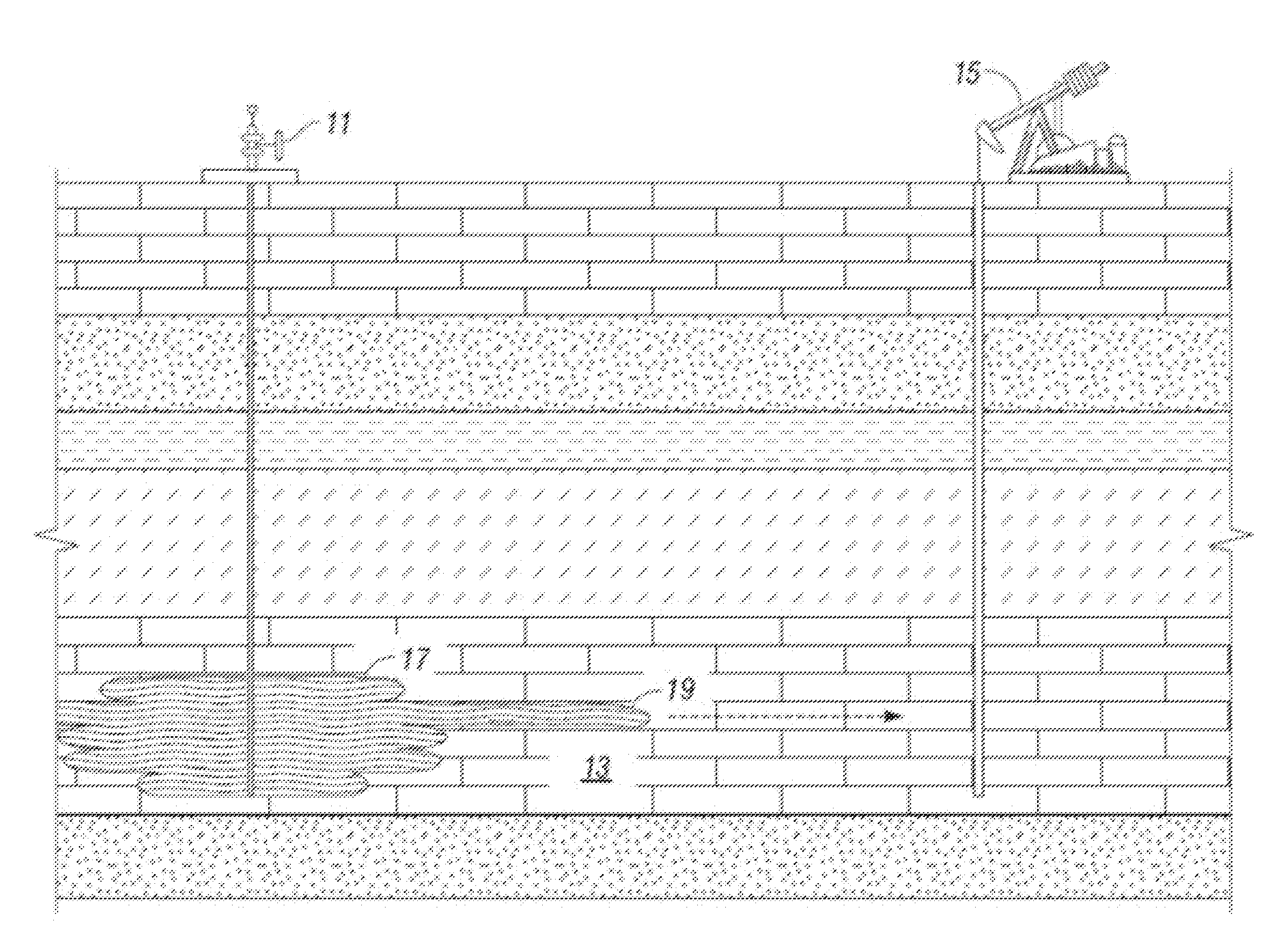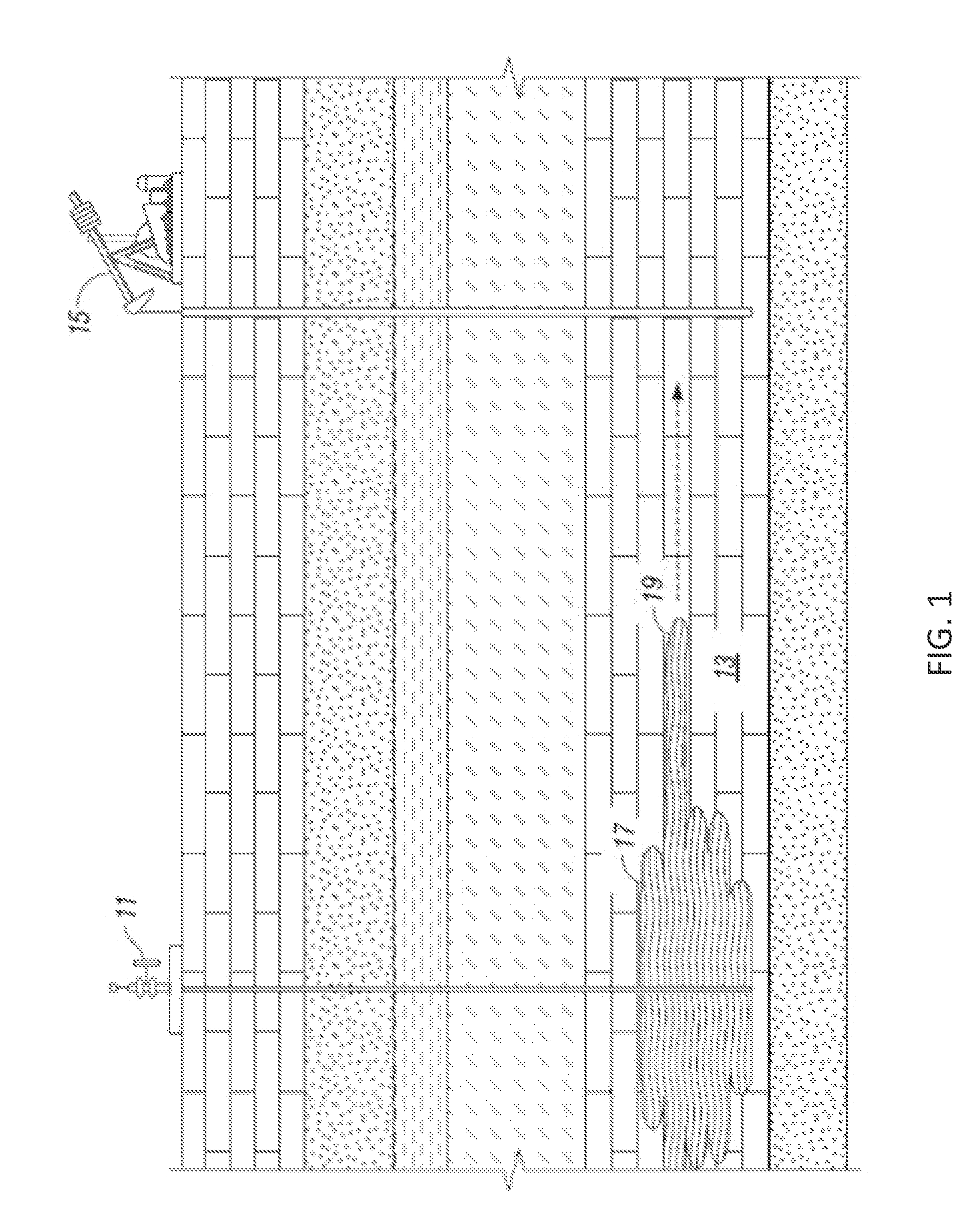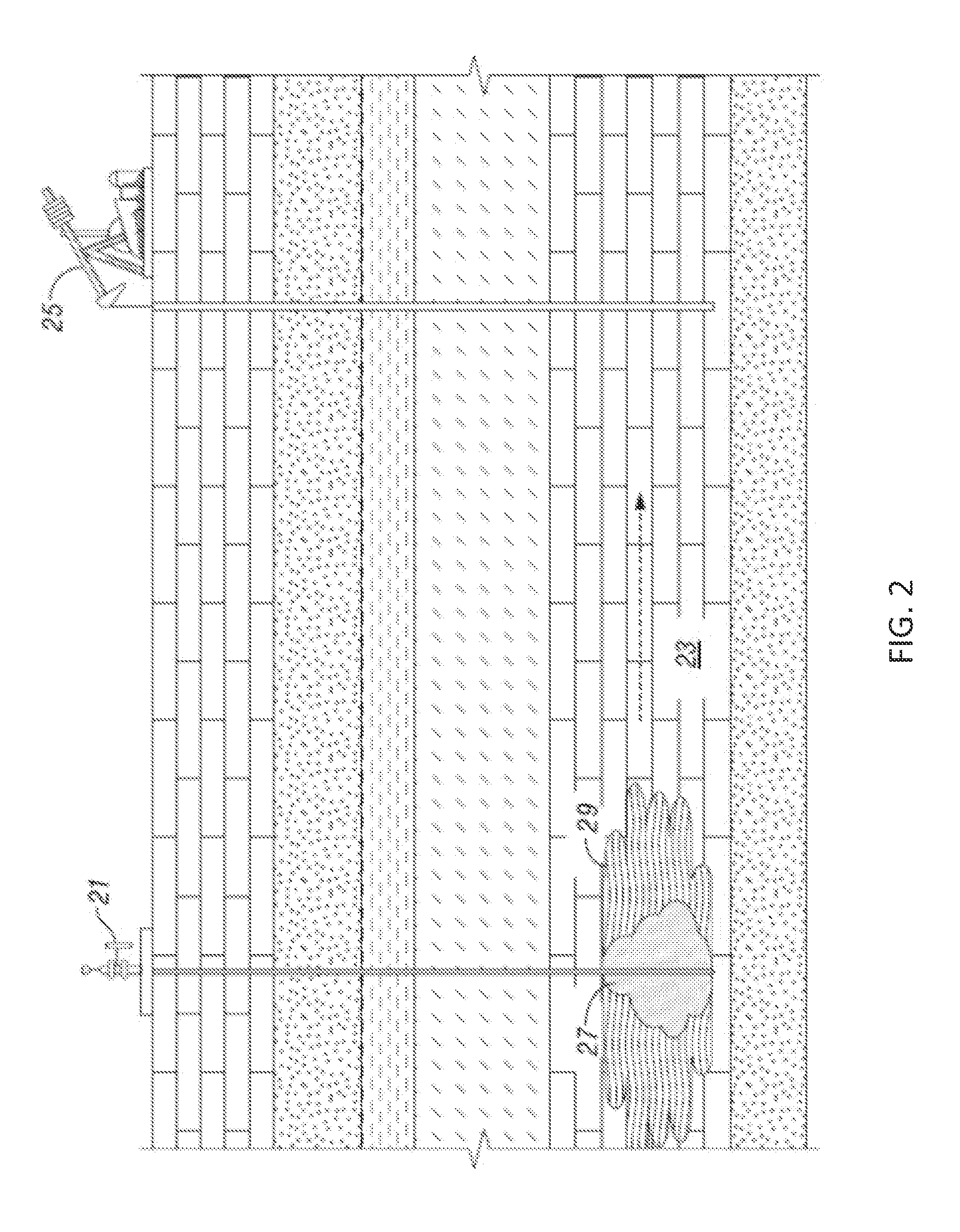Enhanced oil recovery in low permeability reservoirs
a low-permeability, oil-recovery technology, applied in the direction of fluid removal, climate sustainability, borehole/well accessories, etc., can solve the problems of not being able to use some reservoirs, carbon dioxide, and sometimes difficult economic hydrocarbon recovery from reservoirs, so as to improve efficiency, enhance oil recovery processes, and reduce the effect of recovery efficiency
- Summary
- Abstract
- Description
- Claims
- Application Information
AI Technical Summary
Benefits of technology
Problems solved by technology
Method used
Image
Examples
example 1
[0030]Referring to FIG. 2, an injection well 21 is illustrated extending to a portion of a subterranean reservoir 23, which contains hydrocarbons for production. Injection well 21 is in fluid communication with subterranean reservoir 23 and the hydrocarbons therewithin. Production well 25 is positioned a predetermined distance away from injection well 21 and is also in fluid communication with reservoir 23 in order to receive the hydrocarbons therefrom. As will be readily appreciated by those skilled in the art, there can be additional production wells 25 spaced apart from injection well 21 at predetermined locations to optimally receive the hydrocarbons being pushed through reservoir 23 due to injections from injection well 21.
[0031]To determine a suitable substantially anhydrous composition for injection into a given reservoir, parameters of the reservoir are usually measured or considered. Such parameters include reservoir permeability, amount of reservoir water, and reservoir ph...
PUM
 Login to View More
Login to View More Abstract
Description
Claims
Application Information
 Login to View More
Login to View More - R&D
- Intellectual Property
- Life Sciences
- Materials
- Tech Scout
- Unparalleled Data Quality
- Higher Quality Content
- 60% Fewer Hallucinations
Browse by: Latest US Patents, China's latest patents, Technical Efficacy Thesaurus, Application Domain, Technology Topic, Popular Technical Reports.
© 2025 PatSnap. All rights reserved.Legal|Privacy policy|Modern Slavery Act Transparency Statement|Sitemap|About US| Contact US: help@patsnap.com



